Founded in 2004 and Qualiopi-certified in 2024, the École de Management Appliqué (EMA) is known for its resilient, future-focused approach to business education. In a constantly evolving academic and economic environment, the EMA stands out by offering applied, human-centered teaching methods that meet real-world challenges. The EMA has interviewed Maja Ivkovic, Mathematics teacher at EMA, about how she dispenses courses at the school.
For the students who don’t know you yet, can you introduce yourself and walk us through your professional journey?
My name is Maja and I am originally from Croatia. I've lived in Paris for the past 11 years, 11 beautiful years I have to admit, full of growth and professional development. Currently I teach Mathematics applied to Finance at École de Management Appliqué in Paris. My passion for Mathematics started very long time ago. I still remember the exact moment I decided to study math. I was like 12 or 13, and we learned Pythagorean theorem applied to pyramids. There were some complex problems which required different way of thinking and problem solving. The excitement and intellectual fulfilment I felt after understanding and solving those difficult problems at that age, made me realise: this is how I want to feel for the rest of my life, this is what I want to do! And here I am, almost 30 years later, the love and passion for Math still lasts
I earned a Master's degree in Mathematics from the University of Zagreb, specializing in Financial Mathematics and Business. After graduation I was hoping to find a job in a financial institution, but that happened at the same time of big financial crisis in 2008 when was almost impossible to find a job in that industry. That’s why I started teaching, at first in high schools, later becoming an Assistant Professor at the University of Chemical Engineering and Technology. Teaching became a real joy and pleasure for me; hence I decided to pursue this career. When I moved to France in 2014, I quickly found the opportunities thanks to universal language of Math and my fluency in English. I believe the combination of the two was a real power. I became an expert for the GMAT and SAT test, helping many students gain admission to the top European and US universities. I've also worked in academic research, particularly in data analysis and innovation strategy. I truly thrive in academic setting, it's where I feel I belong. Today, I'm especially interested in Data Analysis, Machine Learning and Cryptography.
The world of mathematics often appears centered around complex calculations, prioritizing difficulty over simplicity. Can you tell us more about your teaching strategy to make these concepts easier to understand?
Yes, I understand, that's how it feels like from outside, like we mathematicians enjoy making things harder than they are. But I would say the opposite is true: our goal is in fact to simplify complexity, if I may express it this way. The world is complex, the nature is complex, and Mathematics is our tool to make sense of this complexity, so yes - to simplify complexity is a right way to say :)
Anyway, Math is not supposed to be easy, that's part of its beauty. And that's exactly the beauty that I want to convey to my students.
At EMA I teach Mathematics applied to Finance, and I've found that using real-world, practical examples helps make abstract problems meaningful and approachable.
It's not always easy I must admit, many students come from diverse backgrounds, have varying level of confidence in Math, and it's not rare that they even fear Math, unfortunately. It's for sure much more fun to study when you can imagine a real-life situation and think about solving a real problem. My goal is to teach students how to think, encourage them to use logic and solve problems, to break a complex problem into smaller ones.
For example, when we study geometric sequence, I challenge them with the problems they could use at work one day. Geometric sequence is for example 2, 4, 8, 16, 32,... where every following term is the previous term multiplied by a constant, in this case 2. So here is a problem I present: you must advise your client about when to sell her car. She bought a car one year ago for 15,000 euros, and it depreciates by 10% annually. In how many years the client should sell the car to still recover 10,000 euros? This exercise not only teaches mathematical concept of geometric sequence but also mimics the kind of financial decision-making students might encounter in their career.
In lessons on differentials, we are ticking business problems like maximising profit, minimising cost, or predicting the changes in demand if the price of a good increases by 1 euro. These exercises are rooted in the reality of management, making Math directly applicable. There are many more examples I could mention, but this is just to give you a quick overview on my teaching strategy.
I believe a strong foundation in Mathematics and data analysis is crucial for future finance professionals, especially in today's data-driven economy. Whether it is analysing customer behaviour or forecasting sales, quantitative skills empower students to make smarter, evidence-based decisions.
Having thought in both Croatia and France, I bring a multicultural perspective to the classroom. This enriches engagement, encourages open discussions and helps me adopt my approach to meet students where they are - academically and culturally.
I spend a great deal of time preparing my classes because it matters to me that students feel confident, capable and inspired. However, my greatest award is seeing them not just understand the Math, but actually enjoy the process of learning it.
Today, many students struggle with learning math and are often forced to pursue other career paths. How does EMA create a supportive environment to spark and maintain students’ interest in your area of expertise?
It's true that many students struggle with Math and sometimes feel pushed away from the fields it's essential. But I believe the problems lie less in the subject itself but the way it's taught. At EMA, we take a different approach, one that makes students feel supported, seen and capable
As I mentioned earlier, our students come from a wide range of educational systems and cultural backgrounds. That diversity means there is often a big gap in prior Math knowledge. But EMA handles this successfully. Our class sizes are small, which allows us to get to know each student's strengths and weaknesses. In this kind of setting students feel comfortable asking questions, engaging in discussions, helping each other and progressing at their own pace. That freedom and flexibility builds confidence, which is essential in learning Math.
I've worked with hundreds of students over the years, and one thing I've noticed consistently is that those who engage deeply with Math often perform better across other subjects - especially in economics, finance and data-driven fields. Memorising definitions is not enough. What really matters is understanding the logic behind them, and how and why things work as they do. That's what I aim to teach.
I'm happy to know that EMA values both Mathematics and individualised support. EMA's international environment also adds a rich dimension to the learning experience. Together with our students, I learn to appreciate and embrace cultural differences, which makes all of us stronger, more open-minded and more adaptable.
Nowadays, students increasingly use AI in their daily lives. Can you share your perspective on its role and impact in the field of mathematics?
This is a very important and complex discussion and I have to admit that I can't offer a right answer. We're still in the process of understand the full impact of AI on education and society.
The development of AI is certainly one of the most impressive technological revolutions in history, and it's important to emphasise that behind AI it's all Math. It's already transforming the fields of medicine, finance, marketing, and of course, education. In Mathematics, AI is a powerful tool that can help visualise concepts, solve problems and even support personalised learning. But like any tool, it has to be used wisely.
One of my concerns is that students may start relying on AI too much, especially without fully understanding the underlying concepts. AI tools like chatgpt, while impressive, often make mistakes in mathematical reasoning or calculations. That's why I always encourage students to use them critically, as support, not as replacement for thinking.
Mathematics is not just about offering the final answer, it's all about the process of how you arrive to that answer. It's about logic, structure and deep understanding. And if we lose that, I'm afraid we're losing the purpose of being human.
I don't wish to resist the new technologies, but rather to teach students how to use them responsibly, knowing when AI can be helpful, and when it's better to rely on your own brain.
In a way, AI is pushing us to redefine the purpose of homework and education itself. If the answer is just one click away, what becomes more valuable is the process, the questioning and the critical thinking behind the solution. And that's exactly what we should focus on cultivating.

 Brochure
Brochure
 Apply Now
Apply Now
 Virtual Tour
Virtual Tour
 Book a campus tour
Book a campus tour